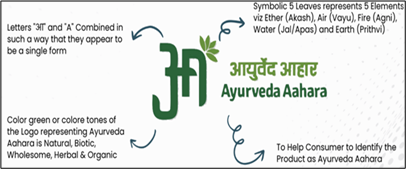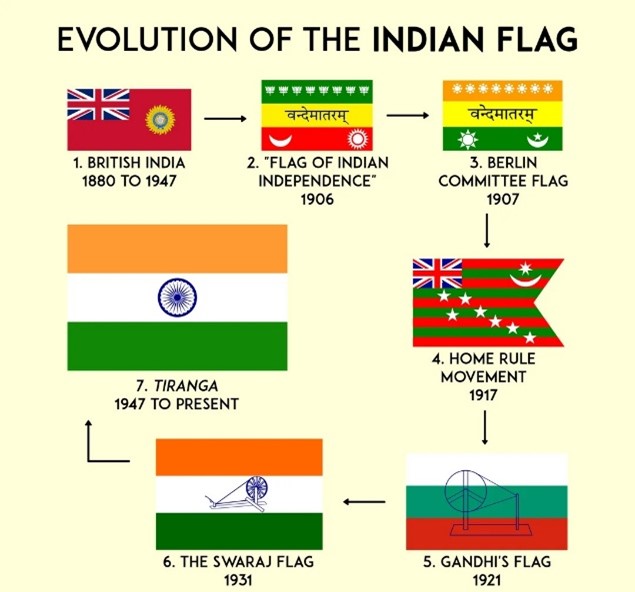News In Short News In Short
‘Ayurveda Aahara’
Context: Recently, the Food Safety and Standards Authority of India (FSSAI), in consultation with the Ministry of Ayush, has released a definitive list of Ayurvedic food preparations under the category of “Ayurveda Aahara” aiming to mainstream time-honoured food wisdom.
Ayurveda Aahara

- It refers to food products developed in line with the holistic dietary principles of Ayurveda, one of the world's oldest systems of health and wellness.
- Ayurveda, an indigenous ancient medical science of India, is more than 5000 years old and emphasises holistic well-being through a balance of mind, body, and spirit.
- These preparations emphasise balance, seasonal suitability, and use of natural ingredients and herbs known for their therapeutic benefits.
- This initiative aims to assist Food Business Operators by providing a clear and credible reference for the manufacture of Ayurveda Aahara products.
- It marks a pivotal moment in enhancing regulatory clarity for industry stakeholders while promoting the widespread adoption of Ayurveda-based nutrition for better public health outcomes.
The Food Safety and Standards Authority of India (FSSAI)
- FSSAI is an autonomous statutory body under the Ministry of Health & Family Welfare, established under the Food Safety and Standards Act, 2006 (FSS Act) in 2008.
- FSSAI has been created to lay down science-based standards for articles of food and to regulate their manufacture, storage, distribution, sale, and import to ensure availability of safe and wholesome food for human consumption.
Sabbatical Leave scheme of Sikkim Government
Context: Recently, Sikkim has become the first state to introduce a formal Sabbatical Leave scheme for its government employees.
Sabbatical Leave scheme

- The scheme was introduced in August 2023 for all regular employees with at least five years of continuous service.
- The scheme allows regular state government employees to avail themselves of leave ranging from 365 days to a maximum of 1,080 days, once in their entire service carrier, with 50% of their basic pay during the period of absence.
- The scheme also safeguards their seniority and permits the government to recall employees with one month’s notice.
- To further streamline the process, the government in April 2025, delegated the approval authority for granting sabbatical leave.
- Heads of Departments are now empowered to approve leave for Group C and D employees, including temporary staff, while approvals for Group A and B employees rest with the Secretary of the Personnel Department.
149th birth anniversary of Pingali Venkayya
Context: The Honourable Prime Minister paid tribute to Shri Pingali Venkayya, on his 149th birth anniversary.
Shri Pingali Venkayya
- Pingali Venkayya was a freedom fighter and the designer of the Indian National Tricolour. The national flag that we see today was based on his design.
- Born on August 2, 1876, at Bhatlapenumarru, near present-day Machilipatnam in Andhra Pradesh.
- At age 19, Venkayya joined the British Indian Army and participated in the Boer War in South Africa, where he met Gandhiji.
- He published a booklet in 1916 titled "A National Flag for India," containing about 30 designs for a potential Indian flag.
- Gandhiji asked Venkayya to design a new flag at the 1921 National Congress meeting, and the flag was officially adopted by the Indian National Congress in 1931.
- Venkayya died in penury on July 4, 1963, and a postage stamp was issued in his honour in 2009.
Evolution of the Indian National Flag

- 1906 – First flag hoisted during the Swadeshi and Boycott Movement in Calcutta.
- 1907 – Madam Bhikaji Cama hoisted a similar flag in Paris, internationalising the freedom cause.
- 1917 – During the Home Rule Movement by Annie Besant & Bal Gangadhar Tilak, a new flag was introduced.
- 1921 – Pingali Venkayya designed a flag with three stripes for different communities and a spinning wheel for self-reliance.
- 1931 – Final colour symbolism adopted:
Saffron – Courage
White – Peace
Green – Fertility and Growth
Ashoka Chakra replaced the spinning wheel to represent law and progress.
- July 22, 1947 – Present version was formally adopted by the Constituent Assembly as the National Flag.
‘Matri Van’ Initiative
Context: Recently, the Minister for Environment, Forest and Climate Change and Minister for Housing and Urban Affairs presided over the launch of the Matri Van Initiative in Gurugram.
More on the News
- It is an initiative under the ‘Ek Ped Maa Ke Naam’ Programme of the Government of India.
- It is a theme-based urban forest dedicated to nurturing generations through mother-nature-inspired green efforts. It would be developed in an area of 750 acres in the Aravalli Hill area.
- It is envisioned as a distinctive ecological and cultural space aimed at enhancing biodiversity, promoting public well-being, and advancing urban sustainability.
- This objective will be realised through multi-stakeholder collaboration involving CSR partners, Resident Welfare Associations (RWAs), NGOs, multinational corporations (MNCs), schoolchildren, and government organisations.
- The main components of the ‘Matri Van’ include removal of existing bushes like Kabuli Kikar (Prosopis juliflora) and plantation of Dhak/Amaltash Trees along Gurugram-Faridabad Road, while creating theme-based Plantation Groves to restore local ecology in the Aravallis.
Bio-fortified potatoes
Context: The International Potato Centre (CIP) will soon introduce bio-fortified potatoes in Indian markets aiming to improve nutritional intake and seed availability for farmers.
Biofortified Potato
- A biofortified potato is a variety developed through conventional plant breeding techniques to contain higher iron content than regular commercial potatoes.
It is not genetically modified (non-GMO).
Developed by the International Potato Center (CIP) with support from global partners.
It is aimed at addressing iron deficiency in human diets, especially in vulnerable populations. - Bio-fortified sweet potatoes, additionally contain added Vitamin A using technology developed by the CIP, are already available in Karnataka, Assam, West Bengal, and Odisha.
How is it developed?

- Cross-breeding:
High-yielding, disease-resistant, and palatable potato varieties are crossed with potato lines that naturally have high iron content. - Selection of Progeny:
The offspring (called progeny) are grown and tested over multiple years.
Traits such as iron levels, yield, disease resistance, and taste are carefully evaluated. - Final Selection:
Only the best-performing varieties are selected for further development and release to farmers.
Biofortification
- It is the process by which the nutrient density of food crops is increased through conventional plant breeding, and/or improved agronomic practices and/or modern biotechnology without sacrificing any characteristic that is preferred by consumers or most importantly to farmers.
- It helps to improve vitamin and mineral levels in staple crops.
- Biofortification aims to increase nutrient levels in crops during plant growth rather than through manual means during processing of the crops.
- • Iron-biofortified beans, zinc-biofortified wheat and rice, and provitamin A-biofortified sweet potatoes, maize, and cassava are the few examples already available biofortified crops in the market.







